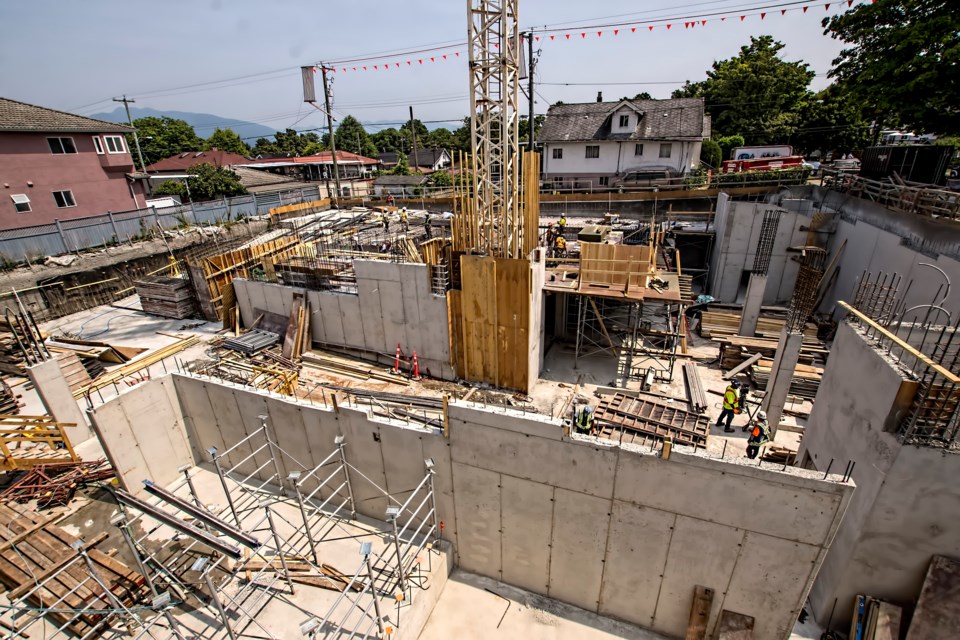B.C. building permits skyrocketed in April, suggesting we’ll see a jump-start to construction in the coming months. Building permit values leapt by 81.1 per cent to reach a seasonally adjusted $3.1 billion, exceeding the previous high set a year ago in June 2023. This month’s significant gain led the national uptick in building permit issuances and was due to growth in both the non-residential and residential sectors, where construction intentions were up by 60.2 per cent and 150 per cent, respectively. Year-to-date permits were 25.9 per cent higher than the same period in 2023.
The 12-month moving average of permits in the province—subdued since late 2022—registered their largest gain since May 2022. The first of many anticipated Bank of Canada interest rate cuts will likely provide more support for construction. However, it will take several cuts to see a substantial and sustained boost in building intentions.
Residential building permit values in B.C. increased to $2.1 billion, the highest monthly value issued in the sector to date. Multi-family dwelling permits increased by 75.2 per cent, with 7,200 new permits issued for multi-unit construction projects in areas such as Surrey and Coquitlam. Single-dwelling residential permits grew as well, although not as significantly. That subcategory saw a 1.1-per-cent rise in permit issuances, down from an eight-per-cent increase in March.
Non-residential permit values rose in April to reach $1 billion, as all subcategories saw greater permit values during the month. Following notable declines in March, both industrial and commercial permit values more than tripled from March to April, while government permits issuances rose by 24 per cent.
Almost all of B.C.’s census metropolitan areas saw more permits issued in April. Permits in Vancouver more than doubled on both a monthly and year-over-year basis. In Chilliwack, permits issuances rose by nearly 50 per cent, while permit numbers were up by 22 per cent in Victoria, month over month. Kelowna and Nanaimo also saw higher permit values, which were up by 12 per cent and 14.7 per cent, respectively. In contrast, permits were down in Kamloops (down 0.6 per cent) and Abbotsford-Mission (down 45.3 per cent).
Manufacturing sales in B.C. rose by 2.8 per cent to $5.3 billion in April, reversing March’s decline. Non-durable goods sales jumped 5.1 per cent month to month, and durable goods registered a modest 0.8-per-cent increase in sales. On a year-over-year basis, B.C. manufacturing sales were two per cent lower than they were last April. They also decreased by 4.3 per cent on a year-to-date basis.
Within durable goods, mixed results were seen across categories, with notable increases in transportation equipment manufacturing sales (up 13.2 per cent) and furniture and related product manufacturing sales (up 13.6 per cent). After a decrease in March, wood product manufacturing sales edged up by 0.8 per cent. Primary metal manufacturing saw the largest proportional decrease in sales at 8.7 per cent. On a yearly basis, durable goods reported 3.5 per cent fewer sales, while non-durable goods industries posted a 0.2-per-cent decline in manufacturing sales.
Within the Vancouver metropolitan area, manufacturing sales rose by 8.2 per cent in April, with durable goods sales up 9.5 per cent and non-durable goods sales up seven per cent. •
Bryan Yu is chief economist at Central 1.





